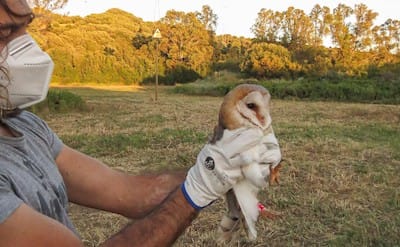- The resident pair of owls have welcomed a second clutch and ten birds have been released
- The initiative is a joint project between the Junta de Andalusia (Regional Government of Andalusia) and the European Union
This initiative was launched in partnership with the Regional Government of Andalusia and the European Union's bird ringing service, EURING. What's more, after the installation of new nest boxes at the Madrevieja Environmental Station, a group of these birds have now been released into the wild. Among the birds released are the six hatchlings from the first clutch along with four additional donations made to the project by GOES (Ornithological Group of Estrecho), as well as a private donation.
EURING, an organization that promotes international collaboration in the study of birds, particularly in Europe and along the Afro-Eurasian migration route, has authorized the Madrevieja Environmental Station to use red rings with white digits. This will make Madrevieja the only center in Europe to use this combination of colors, meaning that birds that are given a ring in San Roque, Cádiz, will be easily identifiable throughout the continent. The Madrevieja Environmental Station currently has the facilities to take care of adult breeding owls and has recently welcomed its first pair of this species, whose offspring have been released. It also hopes to release other owls provided by the Regional Government of Andalusia's Center for the Recovery of Endangered Species.
The Madrevieja Environmental Station is a research center and nature reserve owned by Fundación Cepsa, which has worked to restore the wetland since 2009. Since its inauguration in 2014, Ornitour has been working not only to conserve the area, but also to recover species and the passage of birds in this corner of Campo de Gibraltar, which is open to the public to enjoy and learn from.

